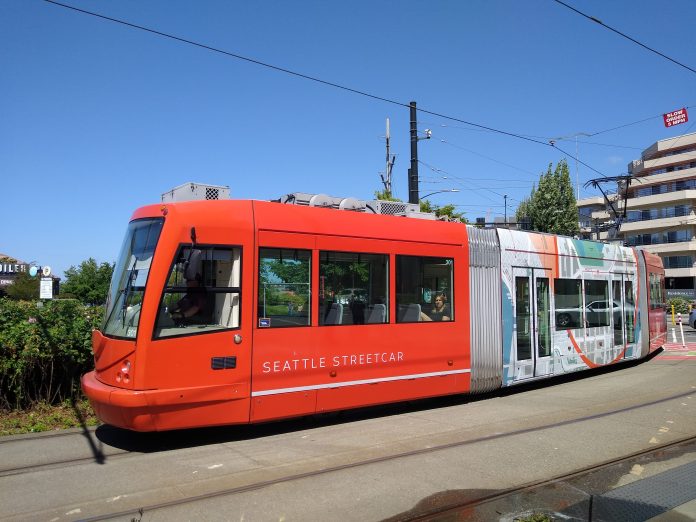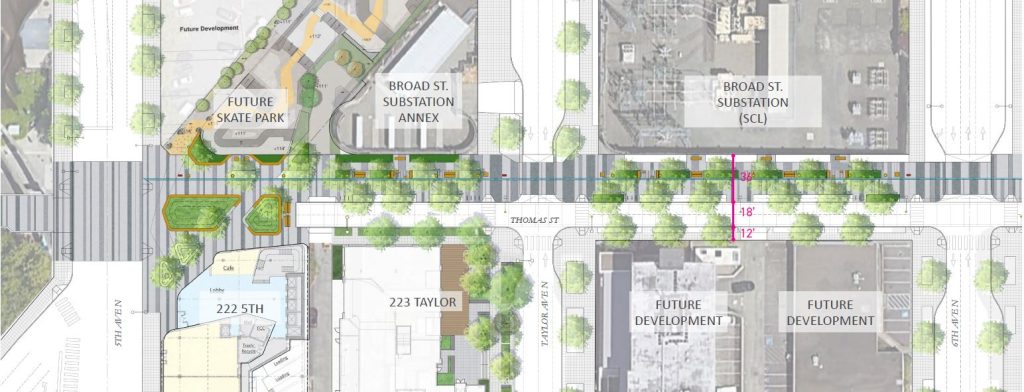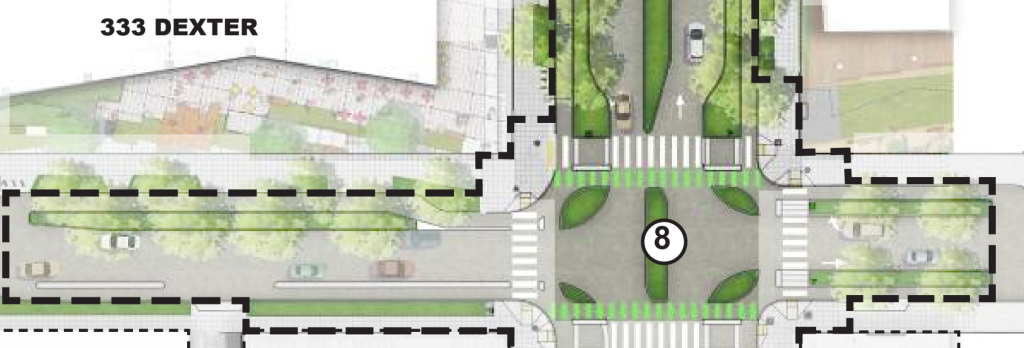
Mayor Bruce Harrell’s first proposed budget for the Seattle Department of Transportation (SDOT) is undoubtedly the biggest window into how the nine-month-old Harrell administration views and prioritizes transportation issues. With the release of that proposal this week, all signs point toward an administration largely interested in keeping things headed in the direction they were when the mayor took office, with few sweeping initiatives or new projects.
For the 2023 budget, revenue forecasts are causing the biggest constraints on the budget. Earlier this week, The Urbanist detailed how revenue into the city’s general fund continues to come in lower than expected, causing the Harrell administration to propose a $95 million infusion from the JumpStart payroll tax, which had been safeguarded and dedicated specifically to housing and new Green New Deal investments. SDOT’s revenue stream of the city’s Commercial Parking Tax is contributing to that revenue gap, with fewer people driving and parking in off-street garages and lots, which are mostly Downtown.
For next year, the biggest change in SDOT’s budget is largely on paper: the decision to cancel the move of the Seattle Police Department’s parking enforcement unit into the city’s transportation department and keep it within SPD. In the past few years, SDOT has taken steps to scale back its partnering with SPD on traffic enforcement, cancelling a planned set of emphasis patrols focused on pedestrian safety. Instead, the department has been expanding its automatic enforcement, adding additional schools to areas where speeds are enforced at school start and end times. But the move to keep the parking enforcement unit inside SPD signals that the Harrell Administration might not be aligned with that move away from relying on armed police to enforce traffic laws.
In addition to revenues coming in lower than the city might like, a number of SDOT projects are being hit with cost increases caused by inflating costs for construction. This includes one of the department’s biggest street overhauls, the planned revamp of East Marginal Way, as well as the continually on-the-horizon project to complete the Burke Gilman Trail through Ballard. These costs increases are limiting the administration from taking on new projects of its own, though there are some exceptions to that. It’s also caused some projects to be cut from the budget.
Seattle’s first protected intersection put on hold, again
With its proposed budget for next year, the Harrell Administration puts back on hold a project that has been years in the making, a complete revamp for the Thomas Street corridor in South Lake Union. Intended to take advantage of the new pedestrian connection across the former Aurora Avenue highway, now 7th Avenue N, “Thomas Street Redefined” is focused on creating a walking and biking corridor to connect to Seattle Center that will turn the street into a gateway to the civic space that people from around the city utilize year round.
The project would have created a diverter across the street from Seattle Center at 5th Avenue N, reducing vehicle traffic east-west on Thomas, and would have created a wide walking and biking path between 5th Avenue N and Dexter Avenue N, with a new public plaza directly adjacent to the skate park that has been built in the former Broad Street right-of-way.

The project also represented a big milestone for the city, which would have been the construction at Dexter and Thomas of Seattle’s first protected intersection, a facility which has been deployed widely in cycling-forward cities around the country. Bellevue has had a protected intersection in the growing Spring District for a few years now, but this strategy hasn’t been implemented yet in Seattle, and with Thomas Street Redefined being put on hold, it’s now likely to be another half-decade before we actually see one. Protected intersections, as their name suggests, protect pedestrians and people on bikes by providing a barrier between them and any turning vehicles, even through the intersection where they’re traditionally the most exposed.

One councilmember has a long history with Thomas Street Redefined, and it’s actually District 6 (Ballard/Greenwood) representative Dan Strauss. Strauss worked on the project as a legislative aide in District 7 councilmember Sally Bagshaw’s office, helping to shepherd the project through a phase where the pedestrian and bicycle facilities were beefed up (hence the new name noting how the project has been “redefined”). In 2020, Jenny Durkan paused work on Thomas Street due to the pandemic, but a budget amendment that year from Strauss, signed onto by several other councilmembers, kept it alive, following pushback from the Move All Seattle Sustainably (MASS) coalition and Uptown community leaders. Over the next month or so, we’ll see if the City Council will again stand up for this project.
Another project that the Harrell Administration is suggesting to cut in their budget is the participatory budgeting program Your Voice Your Choice. In contrast with SDOT’s Neighborhood Street Fund, which pays for large community-suggested projects, Your Voice Your Choice paid for small scale spot improvements, frequently new crosswalks or a traffic circle. It hasn’t given out awards since 2019, and with the Neighborhood Street Fund no longer accepting new applications, Seattle wouldn’t have any place where neighborhood residents could submit ideas for street improvements and have them funded. If the next transportation levy is renewed, however, a similar program could come back under a different name.
Center City Connector still alive, but path forward is unclear
During Mayor Jenny Durkan’s last year in office, a bit of funding was allocated to “restart” the Center City Connector streetcar, the long-planned line that would link Seattle’s two disconnected streetcar lines. The project spent almost the entirety of Durkan’s term in limbo, after the project was put on hold due to concerns about cost increases. Durkan eventually came out in support of completing the project, only to put it on hold again as the pandemic hit city revenue. The 2022 restart was intended to get cost estimates up to date and prepare the city to seek full funding.
The Harrell Administration appears to be keeping the Center City Connector at arm’s length. The city will now be spending an additional year studying the future of the project, with the 2023 budget allocating funding for a “Downtown Mobility Study” to be conducted by the Office of Economic Development in conjunction with SDOT, to look at mobility in Downtown “in the context of future needs, expectations and challenges for residents and businesses.”
In 2014, Bruce Harrell voted for a resolution in favor of the project going after federal funding. At the time, Harrell commented that he supported the project as an economic development project for the Chinatown International District neighborhood. But with city revenue forecasts not looking great and costs for the project having gone up quite a bit in the intervening years, it would utilize a lot of political capital, as well as city revenue, for the mayor to move forward with completing the project. But a federal grant award could be a potential path forward, with the RAISE program a prime contender for the Center City Connector in future years.
Seattle is already embarking on a process to determine the future of the Third Avenue transit mall, and it’s unclear how broad this Downtown Mobility Study will be. The study sounds reminiscent of the One Center City process early in the Durkan Administration in preparation for the Alaskan Way Viaduct demolition work — later rebranded later as Imagine Downtown.
Even as the city is studying the future of the streetcar system, it’s still keeping service levels on the First Hill and South Lake Union line at lower levels, which has a ridership impact. A move toward remote work may make a reconsideration of the South Lake Union service levels reasonable, but the First Hill Streetcar remains below pre-pandemic levels of service.
Small bump in Vision Zero funding
Bruce Harrell’s first budget for SDOT adds on $1.3 million to the Vision Zero program, which the administration is specifically targeting at District 2, the district the mayor represented between 2015 and 2019. In 2021, 44% of the traffic fatalities that occurred citywide happened in District 2, a fact that has focused additional attention on safety in the south end of the city. The added funds are earmarked for the next phase of the Rainier Avenue safety corridor, transit improvements along MLK, and a small amount to move forward pedestrian and bike improvements around the future light rail station at NE 130th Street.
2023 is a pivotal year for a number of safety-related investments that have been years in the making, including the Georgetown to South Park Trail starting construction, a new protected bike lane connecting from the Mount Baker to Judkins Park light rail stations, and some long-planned improvements as part of “Accessible Mount Baker,” at MLK Jr Way S and Rainier Avenue S. Accessible Mount Baker was originally envisioned as a large-scale revamp of that deadly intersection, but the plans right now only include a new crosswalk, some sidewalk repair, and new signage restricting right-on-red.
But Seattle has largely backed away from widely deploying street rechannelizations that have been found by SDOT to decrease vehicle speeds and reduce the number of crashes. The number of wide, multilane arterial streets where drivers take advantage of visual cues that lead to higher speeds remains high across the city, with over 70% of pedestrian fatalities between 2015 and this year occurring on arterials with more than one lane in each direction, according to SDOT’s Vision Zero team. The repaving project moving forward on 15th Avenue NW, which will not change the layout of the street, is a prime example of opportunities that the city isn’t taking that wouldn’t impact the budget much at all.

While there are definitely fingerprints of Mayor Bruce Harrell’s influence on the proposed budget for SDOT next year, the proposal largely represents a continuation of what had been happening in the department before he took office. With most of the attention on other departments, it looks like the mayor will continue to be relatively hands off when it comes to SDOT both in and out of budget season.
In the weeks ahead, the City Council will tweak the mayor’s budget proposal, but with the revenue situation as it is we may not see a huge number of budget adds by councilmembers. But we can expect to see strong signals from councilmembers on their priorities, especially as we head into the last full budget cycle before most of the City Council comes up for reelection next year.
Ryan Packer has been writing for The Urbanist since 2015, and currently reports full-time as Contributing Editor. Their beats are transportation, land use, public space, traffic safety, and obscure community meetings. Packer has also reported for other regional outlets including Capitol Hill Seattle, BikePortland, Seattle Met, and PubliCola. They live in the Capitol Hill neighborhood of Seattle.


